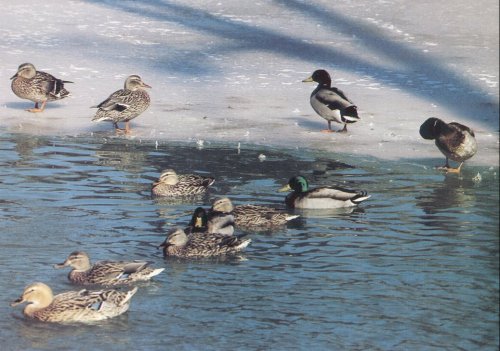
|
Temperature -- Physical Adaptations by Birds - Page 1 Many species have adapted physically to regional variations in climate. One type of adaptation is summerized by Bergmann's Rule, which states that within a species, individuals that live in colder climates have larger bodies than do those who live in warmer climates. A bird with a larger body has less surface area relative to the volume of its body. This means that it has relatively less surface area through which it can lose heat; it is more efficient at retaining heat. Think back to the time when you were cold and did not have a jacket. You probably pulled your arms in close to your body or even huddled down --- you decreased the surface area from which you could lose heat. Another rule, Allen's Rule, also explains patterns of variation. The rule suggests that birds in colder environments have relatively smaller appendages than those in warm environments. The result is an increased ability to retain heat. In warm environments, smaller body size and relatively longer appendages enable a bird to keep cool by ridding itself of excess heat. On to Temperature Adaptation Page 2 ⇨ |
|
| Mallard Ducks | ||
|
|
||